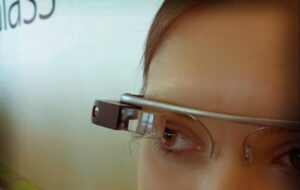Wearable technology has come a long way since the lovable spy Maxwell Smart used the phone shoe, in the ‘60’s show, Get Smart. While  we are just learning how to leverage technologies such as smart phones and tablets, wearable technology has started to enter into the workplace.
we are just learning how to leverage technologies such as smart phones and tablets, wearable technology has started to enter into the workplace.
The concept of wearable technology has not necessarily been widely embraced at this point. However, what intrigues many about tech-enabled clothing and accessories is the possibility of improving workplace productivity.
Consider these possibilities:
- An employee can instantly reference “how-to” videos through their smart glasses or smart helmets when they are performing complex tasks. Reducing the time it takes to research how to perform certain tasks could prove to be quite valuable for organizations seeking ways to improve productivity.
- A recruiter can remotely interview candidates through the use of smart glasses. This technology would enable recruiters to record interviews and monitor how candidates answer questions.
- An employer can monitor employee’s health and wellbeing while performing tasks. Having the ability to monitor employees as they perform dangerous work can prevent injuries. In addition, having the ability to monitor an employee’s temperature, blood sugar levels and pulse rate would enable the employer to alert the employee to take precautions such as a break if something looks awry.
While these are intriguing benefits, critics express concerns and doubts of the effectiveness of wearable technologies.
- Distraction: Some argue wearable technologies can prove to be nothing more than a distraction for employees. For example is it fabulous to have cell phones available in the car to provide GPS direction services. On the other hand cell phones in the car has also proved to distract the driver, causing countless accidents and even deaths.
- Privacy: In addition, privacy concerns is top of mind for many critics of wearable technology. Medical information is considered sensitive information as it is, let alone an employer having the ability to measure your temperature, blood sugar levels, and pulse rates.
- Security: As with any new technology innovation in the workplace, there is always a new possibility of information security breaches for the company. Can you imagine smart glass technology being hacked and your company’s proprietary procedures, recipes, or product creation being recorded without consent?
These concerns generally do not stop forward-thinking companies from engaging new technologies to achieve optimal productivity and ultimately a strong competitive advantage. Planning ahead will go along way towards achieving optimal effectiveness.

Here are 5 tips to help ensure an effective use workplace wearable technology:
- Identify the outcome you’d like to achieve. It is a good idea to determine the desired outcome you’d like to achieve with this new technology. Do you want to enhance wellness and reduce injuries? Or would it be valuable to improve productivity? Determining the ideal outcome in advance will help prevent random distractions with new wearable technologies in the workplace.
- Identify how, why, and where employees will use wearable technology. To prevent confusion or abuses of the new technology is it important to clearly communicate how, why and where this new technology to be used.
- Review and update privacy policies. If new wearable technology will be used to collect personal information it would be appropriate to spell how the information will be used and stored.
- Review and update security policies. Update security policies to include wearable technology. Determine how you will safeguard company information. Train employees on how to use the technology optimally.
- Establish a pilot program. If you are not real sure of the value of wearable technology consider establishing a pilot program. A pilot program is where a specific unit tries out the new technology as opposed to the entire company. This enables a company to safely study how employees actually use the technology and identifying upfront the roadblocks and challenges.
Balancing the pros and cons of wearable technology and applying these common sense tips, a company may soar to new heights.
